|
|
Islamic Art and Geometric Design : Activities for Learning. — New York, 2004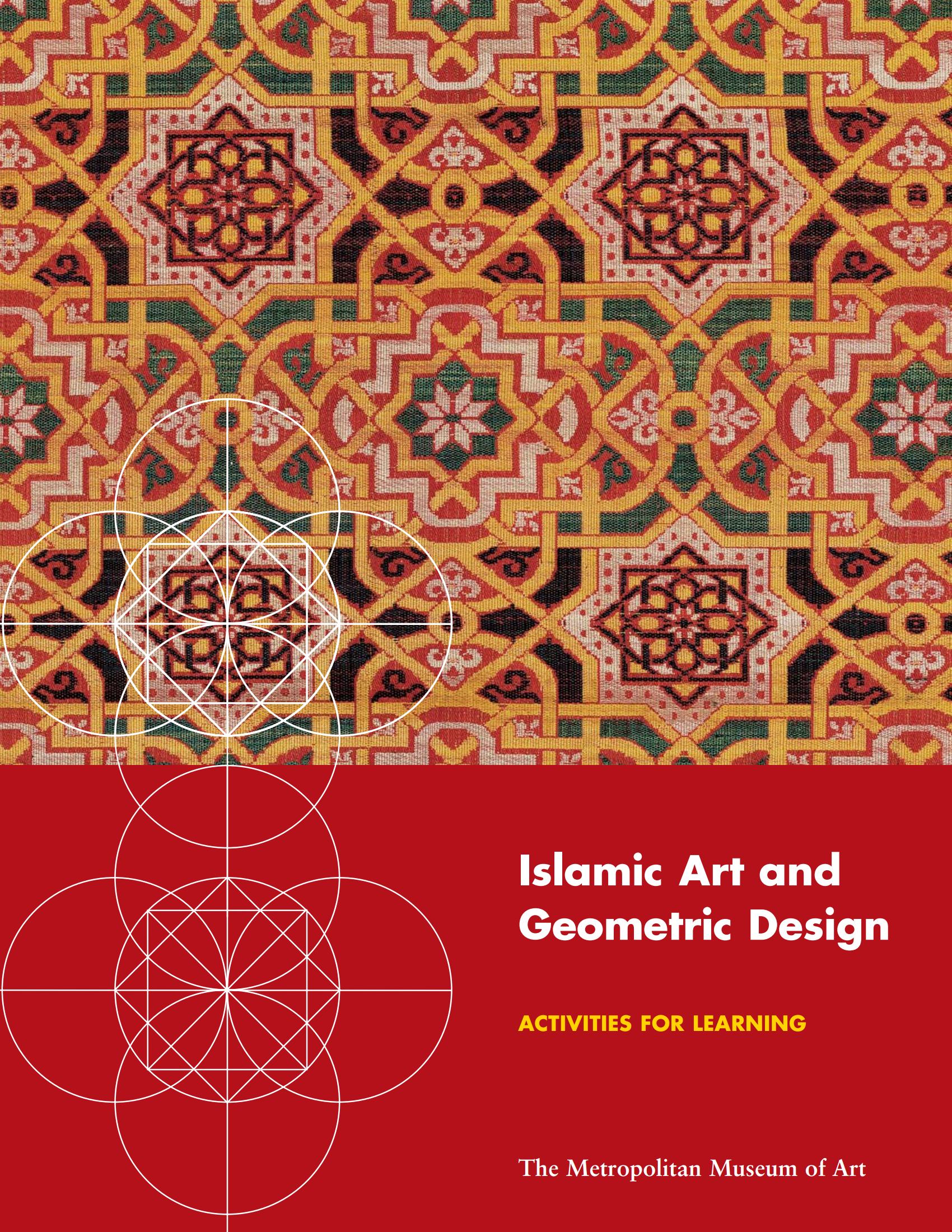 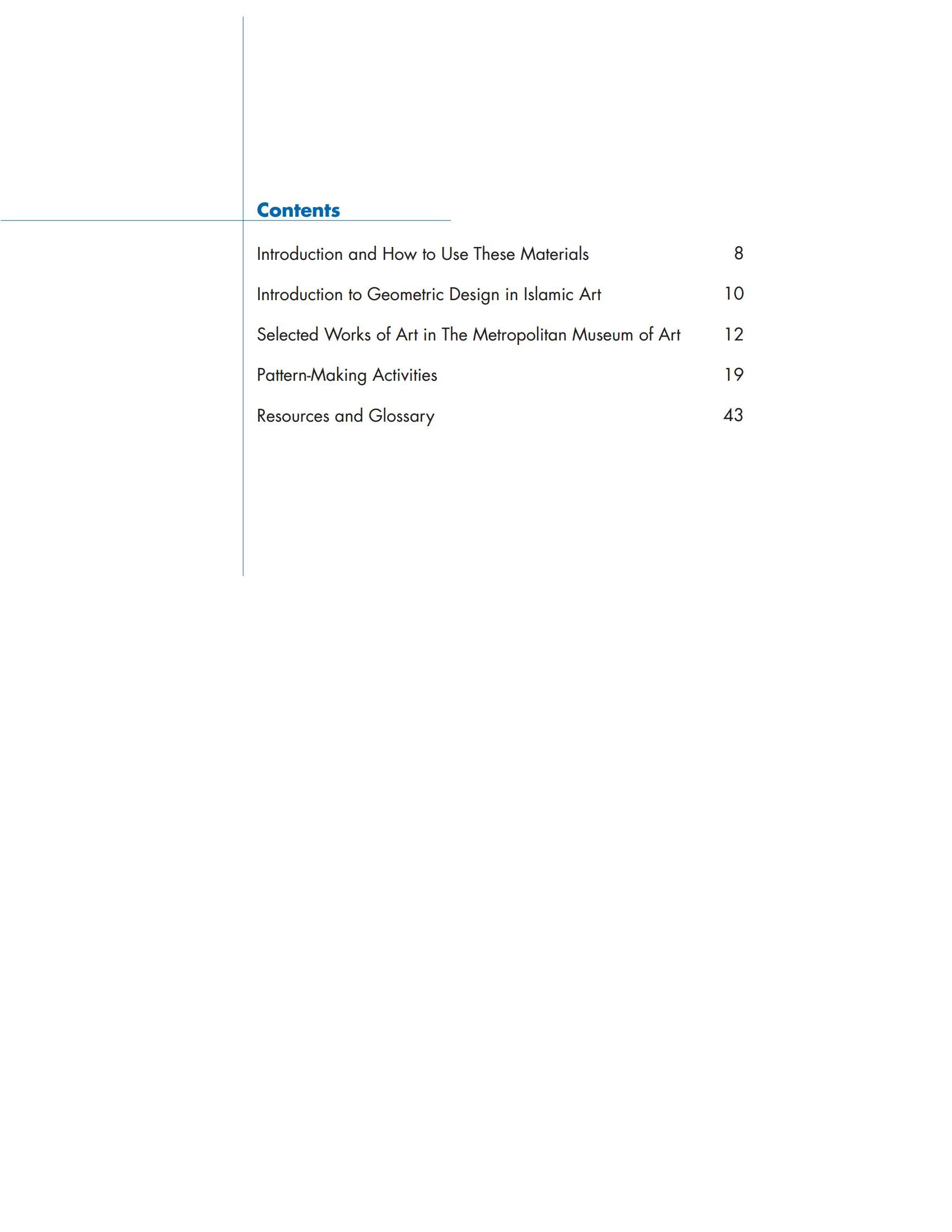 Islamic Art and Geometric Design : Activities for Learning. — New York : The Metropolitan Museum of Art, 2004. — 46 p., ill. — ISBN 1-58839-084-5, 1-300-10343-3Preface
In 1976, Jane Norman—with help from Harry Bixler, Stef Stahl, and Margit Echols—wrote The Mathematics of Islamic Art, a groundbreaking Museum publication responding to the needs of math teachers eager to use the Museum's resources in their classrooms. It became one of the Met's most popular educational publications and has long since been out of print. This new iteration, Islamic Art and Geometric Design, which includes current scholarship on Islamic art as well as expanded activities developed in Museum workshops, remains indebted to Jane Norman's work. We therefore dedicate this publication with gratitude, affection, and admiration to Jane, whose inceptive vision and passion for this project has inspired all that has followed.
Foreword
Surface patterns on works of art created in the Islamic world have been prized for centuries for their beauty, refinement, harmony, intricacy, and complexity. Fine examples of Islamic art, from the seventh to the nineteenth century, can be seen in the Metropolitan Museum's collection. This publication features a selection of those objects in which geometric patterns predominate. By using these materials teachers will be able to show their students how Islamic artists applied their imagination to an underlying geometric framework to create the patterns in these outstanding works of art. Students will also learn the principles of geometric patterns and be able to create their own. We hope that these activities will spark in your students a life-long interest in art and design.
We are fortunate indeed that these educational materials are supported by the Mary and James G. Wallach Foundation. Their contribution underscores their high commitment to art, to students, and to teachers. We are deeply grateful for their generosity.
Philippe de Montebello
Director
Kent Lydecker
Associate Director for Education
Introduction
Works of art can be stimulating starting points for interdisciplinary investigations leading students to explorations of history, social studies, geography, and culture. Less commonly, but no less intriguing, art may be a stimulus for exploring concepts in math and geometry. This resource provides the means for teaching about the history and providing an introduction to Islamic art while learning about the variety of geometric patterns employed by artists to embellish a wide range of works of art, including textiles, ceramics, metalwork, architectural elements, and manuscripts. Through the activities, students will learn the design principles and techniques by which the artists created these beautiful and intricate patterns.
Introduction to Geometric Design in Islamic Art
The principles and teachings of Islam as a way of life, a religious code, and a legal system were promulgated by Muhammad (ca. 570–632 A.D.), an Arab merchant from Mecca. These teachings were revealed to him over a period of many years beginning in 610 and were subsequently codified in the text known as the Qur'an. The word of God, as set out in the Qur'an and handed down in the sayings of Muhammad (known as hadith, or Traditions), forms the core of the religion.
The primary premise of the Islamic faith is monotheism, a renunciation of all deities except one, Allah, who alone is the creator, sustainer, and destroyer of life. Islam is Arabic for "submission," here to the single entity of Allah. The recognition of Muhammad as Allah's last prophet, a prophet like Abraham, Moses, Jesus, and the others that preceded Muhammad, is also a key element of the belief.
Neither the Qur'an nor the Traditions contain specific mandates against figural representation in art. However, both sources take a firm stance against idolatry and the worship of images. These precepts were interpreted strictly by early Islamic religious leaders and exegetes as an injunction against the depiction of human or animal figures, although extant examples of architectural decoration, objects in all media, and illustrated manuscripts belie that stricture. Four types of ornamentation can be found in Islamic art: calligraphy, figural forms (human and animal), vegetal motifs, and geometric patterns. These patterns, either singly or combined, adorn all types of surfaces, forming intricate and complex arrangements.
While geometric ornamentation may have reached a pinnacle in the Islamic world, sources for the basic shapes and intricate patterns already existed in late antiquity in the Byzantine and Sasanian empires. Islamic artists appropriated key elements from the classical tradition, then elaborated upon them to invent a new form of decoration that stressed the importance of unity, logic, and order. Essential to this unique style were the contributions made by Islamic mathematicians, astronomers, and other scientists, whose ideas and technical advances are indirectly reflected in the artistic tradition.
The basic instruments for constructing geometric designs were a compass and ruler. The circle became the foundation for Islamic pattern, in part a consequence of refinements made to the compass by Arabic astronomers and cartographers. The circle is often an organizing element underlying vegetal designs; it plays an important role in calligraphy, which the Arabs defined as "the geometry of the line"; and it structures all the complex Islamic patterns using geometric shapes. These patterns have three basic characteristics:
1. They are made up of a small number of repeated geometric elements. The simple forms of the circle, square, and straight line are the basis of the patterns. These elements are combined, duplicated, interlaced, and arranged in intricate combinations. Most patterns are typically based on one of two types of grid—one composed of equilateral triangles, the other of squares. A third type of grid, composed of hexagons, is a variation on the triangular schema. The mathematical term for these grids is "regular tessellation" (deriving from Latin tesserae, i.e., pieces of mosaic), in which one regular polygon is repeated to tile the plane.
2. They are two-dimensional. Islamic designs often have a background and foreground pattern. The placement of pattern upon pattern serves to flatten the space, and there is no attempt to create depth. Vegetal patterns are may be set against a contrasting background in which the plantlike forms interlace, weaving over and under in a way that emphasizes the foreground decoration. In other instances, the background is replaced by a contrast between light and shade. Sometimes it is impossible to distinguish between foreground and background. Some geometric designs are created by fitting all the polygonal shapes together like the pieces of a puzzle, leaving no gaps and, therefore, requiring no spatial interplay between foreground and background. The mathematical term for this type of construction is "tessellation." The conception of space in Islamic art is completely different from Western models, which usually adopt a linear perspective and divide the picture space into foreground, middle ground, and background. Artists of the Islamic world were largely uninterested in linear perspective. Of the various styles of Islamic art, it was in Persian painting that a type of three-dimensional space was used in which figures could interact, but this space presented multiple viewpoints and simultaneously featured bird's-eye and worm's-eye views.
3. They are not designed to fit within a frame. Geometric ornamentation in Islamic art suggests a remarkable degree of freedom. The complex arrangements and combinations of elements are infinitely expandable; the frame surrounding a pattern appears to be arbitrary and the basic arrangement sometimes provides a unit from which the rest of the design can be both predicted and projected.
Contents
Introduction and How to Use These Materials 8
Introduction to Geometric Design in Islamic Art 10
Selected Works of Art in The Metropolitan Museum of Art 12
Pattern-Making Activities 19
Resources and Glossary 43
Sample pages 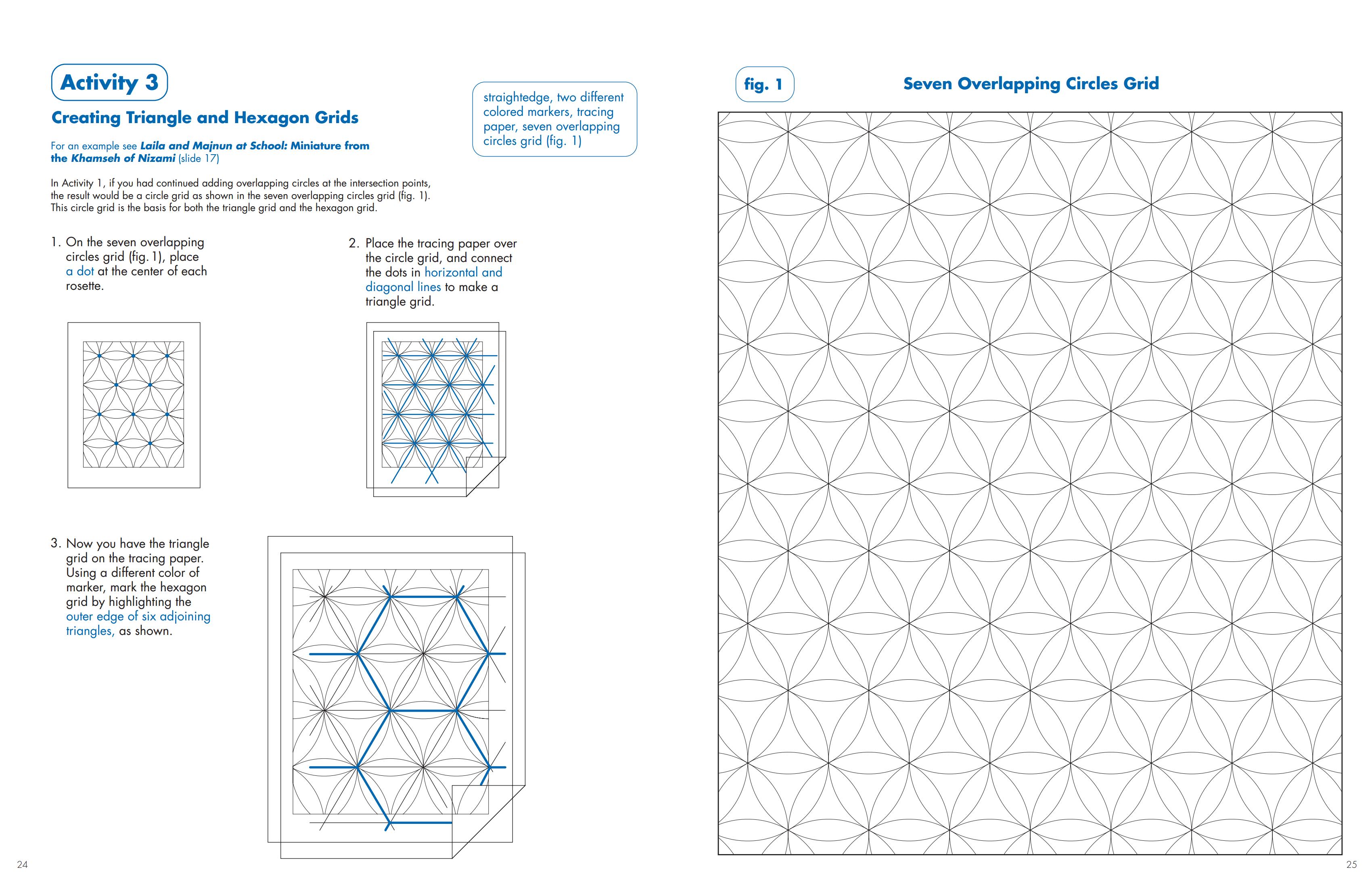 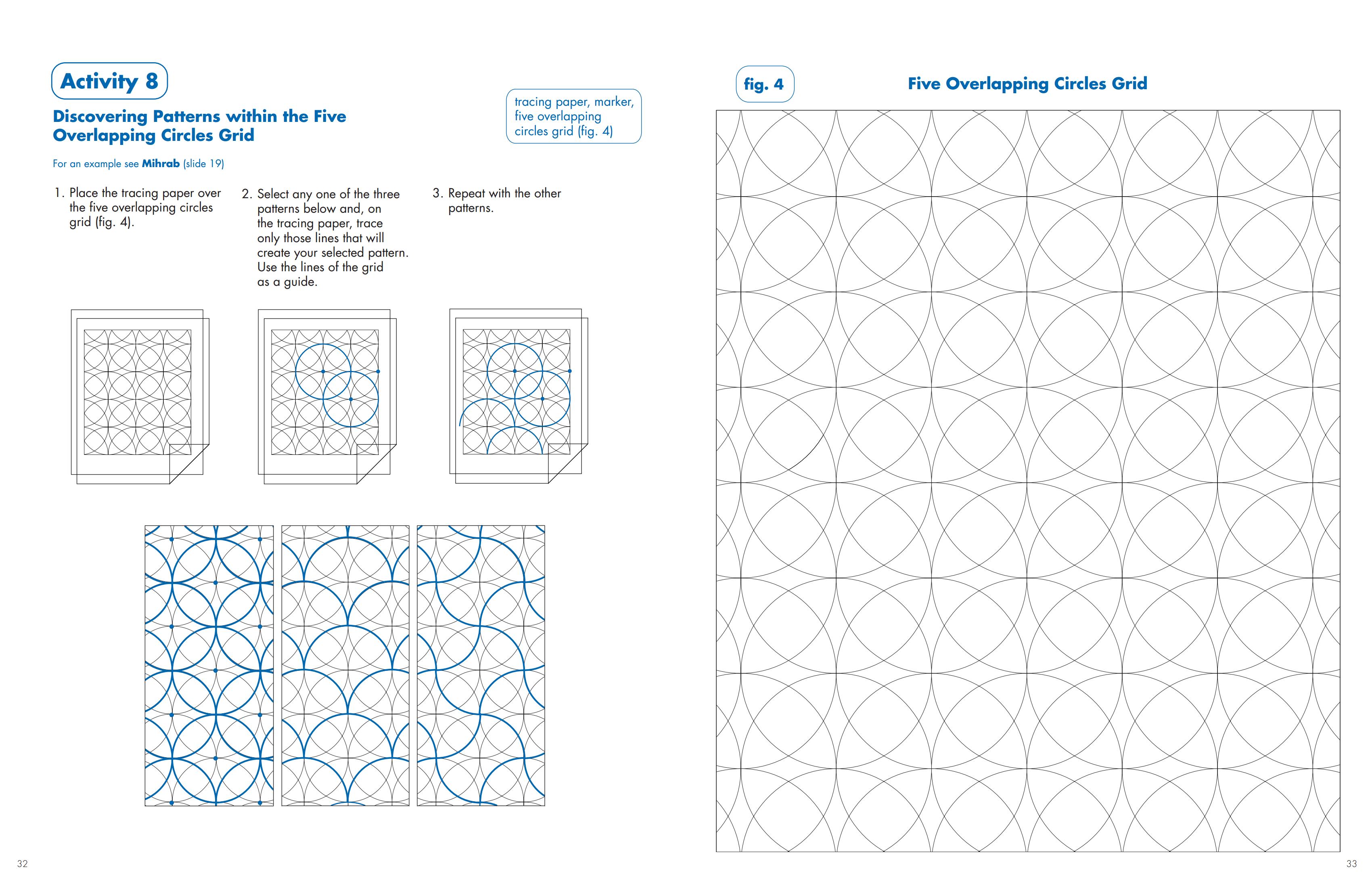 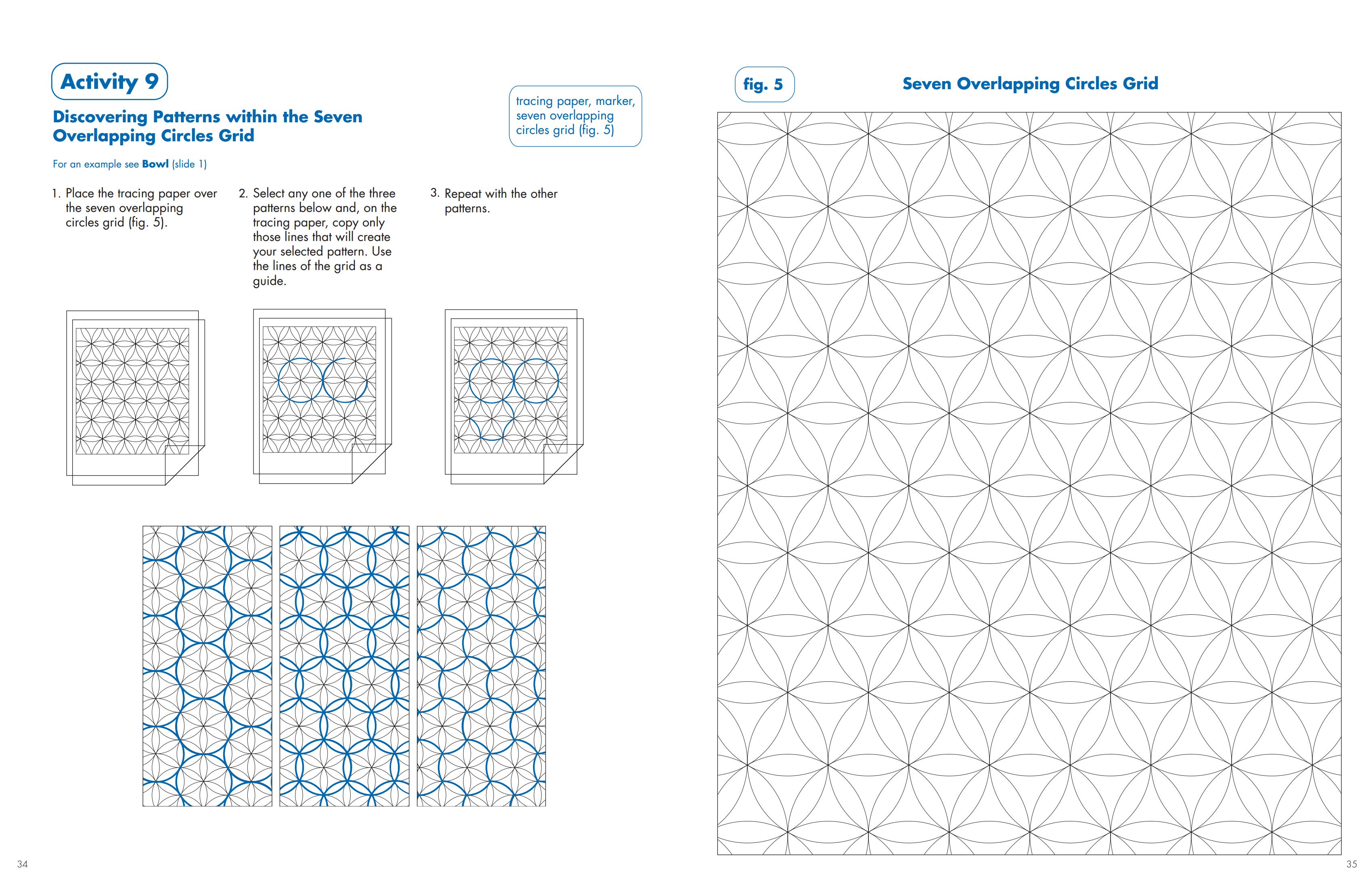
Download link (pdf, yandexdisk; 1,7 MB).
The electronic version of this issue is published only for scientific, educational or cultural purposes under the terms of fair use. Any commercial use is prohibited. If you have any claims about copyright, please send a letter to 42@tehne.com.
25 декабря 2021, 23:04
0 комментариев
|
Партнёры
|






Комментарии
Добавить комментарий